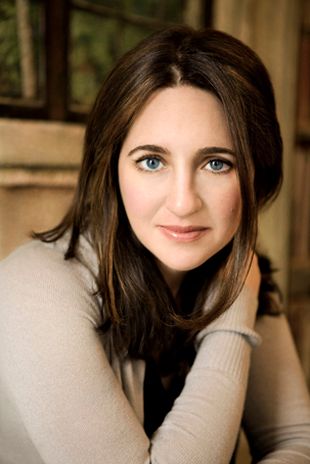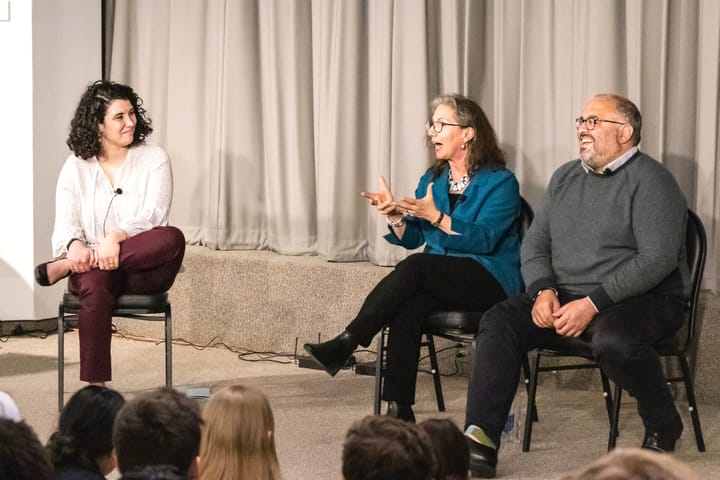Music at Amherst Opens Season with Pianist Simone Dinnerstein
Contributing Writer Lauren Siegel ’27 recounts Simone Dinnerstein’s emotionally charged piano performance at the first concert this semester of the Music at Amherst series.

On Friday Oct. 27, renowned American pianist Simone Dinnerstein performed six captivating pieces to a packed crowd in Buckley Recital Hall, inaugurating the 2023-2024 season of the Music at Amherst series.
Dinnerstein stepped onto the stage with a warm, serene smile and explained that all of the pieces in her program, a majority of which are from her 2021 album “Undersong,” explore the theme of revisitation. She primarily achieves this through the use of refrain, a musical form in which the same material reappears throughout a piece but is reimagined each time it is played. According to Dinnerstein, this kind of musical repetition reflects a composer’s attempt to uncover present truths by working through the past, expressing the notion that recycling the old can focus the ear and mind.
Besides an intermission after the first four pieces, Dinnerstein intentionally played without pause from one piece to the next, fully engrossing the audience in the world of her music. While this decision could have been disorienting for listeners, the musical differences between each piece and Dinnerstein’s shifting demeanor distinguished each song from one another, allowing the audience to clearly follow the program’s progression.
To begin, Dinnerstein sat down at the piano in the middle of the stage. She paused, taking a long, deep breath with her hands in her lap. When lifted her fingers onto the keyboard, she captivated the audience from her first beautiful note.
Dinnerstein opened with “Les Barricades Mysterieuses” by François Couperin. In this wonderfully rich piece, Dinnerstein achieved a kaleidoscopic musical effect by prolonging notes and mixing melody and harmony. Through varying the tempo and intensity of the piece’s refrain, Dinnerstein gradually shifted its emotional significance and offered the audience a fresh perspective of the piece’s central themes. In addition to Dinnerstein’s masterfully controlled hands, she fully embodied the piece in her body and soul. Eyes closed, forehead tightened in concentration, her head slowly shaking from side to side impassionedly, Dinnerstein expressed the emotion of her music through her person, producing an utterly captivating performance.
Without pausing, Dinnerstein moved into her second piece, “Le Tic-Tic-Choc ou Les Maillotins,” also by François Couperin. In contrast to the first piece, this music exploded in a fast, upbeat flurry of sound. Dinnerstein’s fingers flew across the keys in a frenzy, demonstrating complete control over a technically difficult refrain. Dinnerstein’s entire demeanor seemed to shift as she progressed through this piece: her eyes opened, shoulders squared off, and face focused. At the end of this cheerful piece, in which the harmony changed to be slightly deeper and more emotionally-charged, Dinnerstein seamlessly transitioned into “Arabesque,” Op. 18, by Robert Schumann. Reflecting the nature of its ballet posture title, the piece was both utterly elegant and intensely emotional, evoking a thematic intersection between beauty and strife. Dinnerstein expressed the piece’s contrast by shifting between a happy, whimsical melody and slower, melancholic melody in a minor key, changing the intensity and tempo of each refrain as it reappeared.
Upon the conclusion of “Arabesque,” Dinnerstein moved onto “Mad Rush” by Philip Glass. She beautifully weaved together the piece’s major themes of peace and wrath, switching back and forth between a graceful, gentle refrain and a hurricane of intense sound, fingers dashing furiously from one end of the keyboard to the other. Just when the cacophony of noise became almost too overwhelming, Dinnerstein shifted back to the first refrain, bringing the audience greater appreciation of its gentle melancholy. It’s difficult to overstate the level of skill required to successfully perform such a challenging, vulnerable piece, but Dinnerstein made it look easy. Yet again, her poise and emotional expression added significance to the song, making the audience feel as though its essence came from within her very own body. Once Dinnerstein struck the final note of this gripping piece, the entire audience sat in complete silence, pausing to process the intense emotional journey that Dinnerstein just gifted us before erupting into wild applause.
After intermission, Dinnerstein began with “Étude No. 2,” also by Philip Glass. A tranquil piece with a hypnotic melody, Dinnerstein frequently modified speed and intensity to heighten the listener’s emotional relationship to the refrain. As is true with all of her previous pieces, Dinnerstein left the audience feeling as though they just entered a vivid daydream, transporting them to a far-away world where the emotional core of her music could be understood profoundly.
Dinnerstein ended the program with “Sonata in B-flat Major, D 960” by Franz Schubert. Split into three movements, the first movement utilized the musical pattern of the trill to transition between serene, reverent melodies and quick, impassioned harmonies. The second movement emerged more somber and tender than the first, with intense vulnerability pouring through Dinnerstein’s demeanor and into her effortlessly active fingers. When Dinnerstein reached the third movement, the audience was assailed with a sudden deluge of dramatic intensity; the shifting melodies and the fluctuating forcefulness of her notes created a tension that eventually was resolved by the piece’s gentle conclusion. This musical callback to the beginning of the first movement reflects the entire program’s poignant message that by revisiting the past we emerge different, stronger, and with new understandings of our emotions.
After uproarious applause from the awe-struck audience, Dinnerstein was persuaded to play an encore piece, “Etude No. 6” by Philip Glass. This fast, passionate song sharply contrasted Dinnerstein’s previous two melancholic pieces, leaving listeners energized and excited as they headed to the reception.
Dinnerstein started off the Music at Amherst series on an extremely high note with her marvelous concert, proving herself as one of the greatest pianists of our time.
“Her performance was really thought-provoking,” said John Lim ’27. “My biggest takeaway was to be mindful. Not only were the pieces super interesting, but Dinnerstein put so much thought and care into what she played — she was one with the music. I left the concert feeling like a new person.”





Comments ()